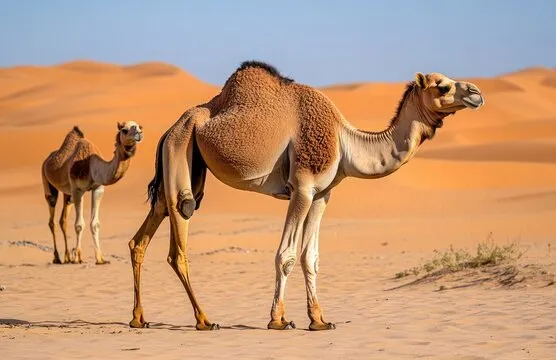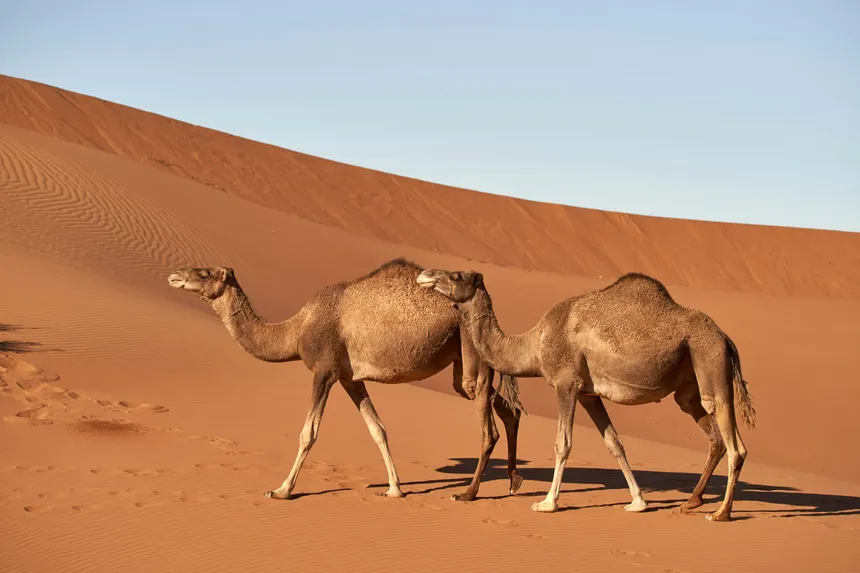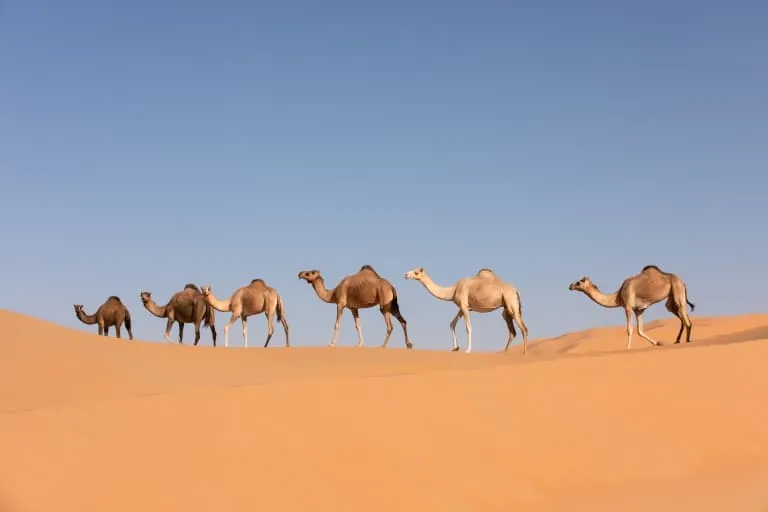Fascinating Facts About Camels

Camels are iconic animals of the desert—instantly recognizable by their humped backs, long legs, and steady gait across the sand. Known as the “ships of the desert,” these remarkable creatures have adapted over thousands of years to endure some of the harshest climates on Earth. But there’s much more to camels than just their ability to survive without water for days.
This article explores the most interesting, surprising, and scientifically rich facts about camels, their biology, behavior, and historical significance.
1. There Are Two Main Types of Camels
There are two primary species of camels:
- Dromedary Camel (Camelus dromedarius) – has one hump, and is native to the Middle East and North Africa.
- Bactrian Camel (Camelus bactrianus) – has two humps, and is native to Central Asia.
Additionally, there’s a wild Bactrian camel species (Camelus ferus), which is critically endangered and distinct from its domesticated relatives.
2. Their Humps Store Fat, Not Water
One of the most common misconceptions about camels is that their humps store water. In reality, their humps are fat reservoirs. This fat can be metabolized into energy and water, allowing camels to go up to two weeks without drinking in extreme conditions.
3. Camels Can Survive Long Without Water—But Drink a Lot When They Do
A camel can drink up to 40 gallons (150 liters) of water in one go. Their bodies can rehydrate quickly without damaging their cells, which would be fatal to most other animals.
4. They Have Incredible Water Conservation Abilities
Camels can lose up to 25% of their body weight through sweating without ill effects—most mammals would die at 12–15%. Their bodies minimize water loss through:
- Highly concentrated urine
- Dry feces
- Nasal passages that trap moisture during breathing
5. Camels Can Close Their Nostrils and Have Long Eyelashes
To survive in sandy environments, camels have evolved:
- Slit-like nostrils that can close to keep out blowing sand
- Two rows of long eyelashes to protect their eyes
- Thick eyebrows and ear hairs that act as natural filters
6. Their Feet Are Built for the Desert
Camels have large, flat, leathery feet with two toes that spread widely when they walk. This prevents them from sinking into sand and gives them traction on uneven terrain.
7. Camels Can Run Surprisingly Fast
Despite their lumbering appearance, camels can reach speeds of up to 40 miles per hour (65 km/h) in short bursts and can sustain 25 miles per hour (40 km/h) for longer periods—making them well-suited for racing in some cultures.
8. They’ve Been Domesticated for Over 3,000 Years
Dromedary camels were first domesticated around 3,000–4,000 years ago in the Arabian Peninsula. Since then, camels have served as:
- Pack animals
- Sources of milk and meat
- Means of transport across vast deserts

9. Camel Milk Is Highly Nutritious
Camel milk is rich in:
- Vitamin C
- Iron and calcium
- Antibacterial and antiviral properties
It’s traditionally used in many desert cultures and is gaining popularity globally for its health benefits.
10. Camels Are Vital to Nomadic Cultures
From the Tuareg of the Sahara to Mongolian herders, camels are an essential part of nomadic life. They provide:
- Transport
- Clothing (from their hair)
- Food (milk and meat)
- Even dung used as fuel
11. They Are Remarkably Tolerant of Heat
Camels can withstand internal body temperatures of up to 106°F (41°C) without sweating. This adaptation allows them to conserve water during the hottest parts of the day.
12. Camels Can Drink Salty Water
Bactrian camels, in particular, can tolerate saline or brackish water, which would be undrinkable for most animals. This adaptation is key in dry and salty regions like deserts and steppes.
13. They Communicate with Sounds and Gestures
Camels use:
- Grunts, bellows, and moans
- Blowing air from their mouths
- Facial expressions and body posture
During mating season, males display a large pink sac called a dulla, which they inflate from their mouths to attract females.
14. Wild Bactrian Camels Are Critically Endangered
The wild Bactrian camel, found in remote parts of China and Mongolia, is one of the world’s most endangered large mammals, with fewer than 1,000 individuals remaining. They are genetically distinct and more salt-tolerant than domestic camels.
15. Camels Can Swim
Though it’s rare, some camels—especially in regions like Kutch in India or Somalia—have been known to swim across rivers or shallow sea inlets, defying the stereotype that they only belong in deserts.
16. They Have a Strong Social Hierarchy
In herds, camels often follow a lead animal—usually a mature female in the wild or a trained male in domesticated groups. Camels can form strong bonds with humans and even recognize individual voices.
17. Camels Are Used in Modern Sports and Festivals
In countries like UAE, Qatar, and Saudi Arabia, camel racing and beauty contests are multimillion-dollar industries. Racing camels are often guided by robot jockeys controlled remotely to ensure ethical treatment.
18. Their Hair is Used for Textiles
Camel hair is used to make:
- Rugs
- Coats and shawls
- Blankets
It is warm, lightweight, and naturally water-resistant.
19. Camels Can Be Aggressive
Especially during mating season, male camels can become aggressive and territorial. They may bite, spit, or even trample rivals or perceived threats.
20. They Spit When Angry (Sort of)
Camels don’t just spit saliva—they may regurgitate the contents of their stomach, mixing it with saliva and projecting it as a defense or dominance display.

Conclusion
Camels are extraordinary animals, perfectly adapted to survive and thrive in environments where few others can. From their unique physiology to their rich cultural significance, camels continue to play an important role in ecosystems, human societies, and even modern economies. As climate challenges increase, the camel’s adaptability may offer important lessons in resilience and sustainability.



